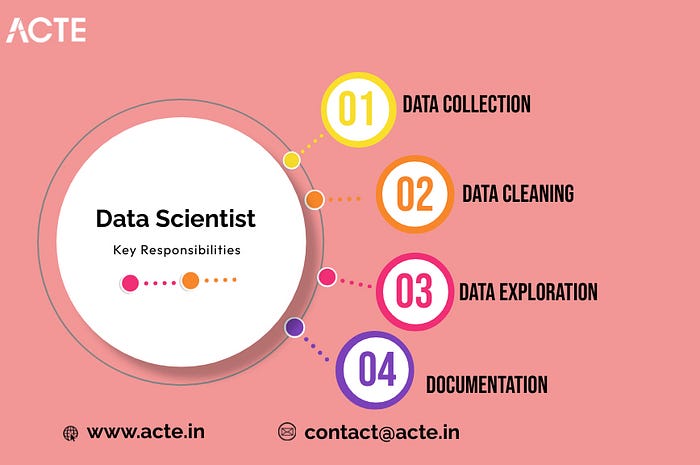Data Roles: An Introduction for Researchers, Analysts, and Scientists
 sathya v
sathya vThose who can infer inferences from data are in great demand in the big data era. Nevertheless, jargon employed in fields involving data might lead to miscommunications.This is Pune's Best DataScience Course material, let's see what drives people's interest in data science.
Let’s delve into the key reasons why people are enamored with DataScience from the Best DataScience Course in Pune.
Data Researcher
An explorer in the huge world of data is what a data researcher is like. Their main responsibility is to compile, compile, and organize data from many sources. Consider them as data collectors that search databases, datasets, and other sources for pertinent information.
Principal Charges:
1. Gathering Data: To gather unprocessed data, they examine a variety of sources, including databases, questionnaires, research articles, and websites.
2. Data Cleaning: Prior to analysis, raw data must be cleaned and arranged because it is frequently disorganized. For this preliminary cleansing, data researchers are in charge.
3. Data exploration: To comprehend the structure, trends, and possible insights within the data, they conduct basic exploration before delving into in-depth analysis.
4. description: Thorough description of the methods and data sources
Data Analyst
The data analyst should take over after the data has been collected and sanitized. Comparable to detectives, data analysts examine data to find significant trends, patterns, and insights.

If you want to learn more about Data Science, I highly recommend the Datascience online training because they offer certifications and job placement opportunities. You can find these services both online and offline.
Principal Duties: 1. Data Interpretation: To derive patterns and extract insights from data, data analysts employ statistical methods and visualization tools.
2. Report Generation: They put their results into clear and succinct reports and dashboards, frequently with the help of tables, graphs, and charts.
3. it Visualization: Stakeholders can more readily comprehend complex information when it is represented visually. When it comes to visualization, data analysts are skilled with programs like Tableau, Power BI, and Python libraries like Matplotlib and Seaborn.
4. Data-oriented Suggestions: Data analysts offer suggestions based on their findings
A data scientist
The wizards of data are data scientists. To tackle complicated problems, they have a special combination of statistical knowledge, programming skills, and domain understanding.
One of the primary duties of a data scientist is to utilize sophisticated statistical methods and machine learning algorithms to derive insights and forecasts from data.
2. Model Development: They create and refine models to anticipate customer churn or estimate demand, among other business difficulties.
3. Implementing Algorithms: Data scientists utilize programming languages like Python or R to construct code that carries out algorithms and models.
The fourth strategy is cross-functional collaboration, where data scientists collaborate closely with stakeholders from other departments to comprehend business goals and match data-driven solutions with those goals.
Subscribe to my newsletter
Read articles from sathya v directly inside your inbox. Subscribe to the newsletter, and don't miss out.
Written by
